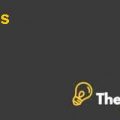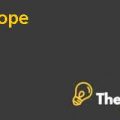Zappos.Com: Developing A Supply Chain To Deliver Wow!
Zappos Cost Policy:
For the purpose of increasing the delivery speed of products from the company’s warehouse to the customer’s place, Zappos shipping cost policy remains same as the percentage of Zappos total sales from several years regardless of an increase in return percentages form total sales of Zappos. Zappos works closely with UPS for the purpose of increasing the efficiency by reducing the shipping cost per order.
Zappos cost policy is to charge the retail price from customers and pay the whole sale price to the suppliers in order to manage the cost of inventory and shipping to the ultimate users. For the purpose of reducing the shipping cost and becoming efficient in it, Zappos has handed over its order fulfillment department to the third party, which has lowered its shipping cost as compared to its previous order fulfillment department Willows.
Operational Response Mechanisms:
In order to analyze the Zappos operational response mechanisms of its inbound logistics, it has started to involve in excess inventory dealing in order to remove the space constraints, which are generally faced by brick and mortar business in its daily dealings. For this purpose, Zappos started to offer the reduced prices to its slow moving brands in order to increase its turnover rate and total sales. Apart from it, Zappos has opened several outlets in different locations in order to grab the opportunities through brick and mortar sales along with the crick and mortar business, which will also clean the space of warehouse which might be faced through an excess of the inventory. It has also bought the online shoe company called 6 pm for the purpose of sale slow moving inventory and cleaning its investment.
In order to analyze the Zappos operational response mechanisms of its distribution network design, it has started to schedule its product delivery by placing the order of its 1400 different brands in 2008. The delivery of these 1400 different brands were made directly to the company’s distribution center, which will reduce the inefficiencies in distribution network of Zappos. Ultimately, the inefficiencies in distribution cost management will be reduced as a result of which, Zappos will enjoy more profits and customer loyalty.
In order to analyze the Zappos operational response mechanisms of its supplier relationship management, it has introduced the supply web called powered by Zappos. It is the technology that has been made to run the website of the company. It is manufactured for the purpose of surpassing those areas where manufacturers deliver product directly to the ultimate users. Apart from it, it is created to provide value to the customers through direct selling from vendor’s warehouse to the final customers.
Conclusions:
The five main conclusions that can be extracted from the case study are described below:
- Zappos remains factual to its view point of customer service to deliver WOW through its best services to everyone who comes into the contract with it.
- Zappos remained successful in the great economic recession of 2008 as compared to the other competitors in the market, due to the best quality services and free return and overnight delivery policy.
- Zappos was sold to Amazon Incorporation at the mid of the year 2009 for 850 million dollars.
- In order to retain the highly profitable customers, Zappos addressed the free return service policy, which initially was for 60 days and later on was prolonged to 365 days.
- Zappos handed over its order fulfillment department to the third party that lowered its shipping cost as compared to its previous order fulfillment department Willows.
Current Challenges and its Decisions:
Evidently, the company has been confronted with various issues in inbound supply chain; such as; due to the inconsistent delivery scheduling, the company is not able to evaluate that how much material it has left in inventory, this in turn posits threat to the company in case of customer order, the suppliers provide stock to company in an attempt to fulfil the customer order. Another issue is the less truck loan, which provides services for relatively small freight or loads, thus lead to increased cost and product damage.
After taking into consideration the issues or challenges, the company should schedule customer orders in appropriate manner, and the fright or loads should directly be placed in the company’s distribution center in order to maintain the stock in warehouse in required quantity. When the company would receive customer orders in bulk, it would be able to effectively and efficiently meet the customer requirements, reducing the burden on working days, but increasing the inefficiencies. Also, the company should own and manage its own fleets with regard to the business purposes. Furthermore, the additional fulfilment center would most likely improve the customer service due to the fact that the company would serve more of the country overnight, also it would lead to the reduction in cost of inventory shipment from suppliers.
Exhibit 1: Critical / Priority Based Decisions
| Critical / Priority Based Decisions | |||
| Organizational Decisions | Competitive Advantage | Soft / Hard Decisions | Choice of Enablers |
| Spending over traditional media | Low | Hard | Benchmark |
| Service as marketing | High | Soft | TQM |
| The toll free number | Shown on forehead | Soft | SOPs |
| Open communication | Stick around us and lets chat | Soft | SOPs |
| Hours of toll free number | 24 hrs | Soft | SCOR |
| Outsourcing | Unmatchable | Soft | Lean |
| Interaction invitations | Each and everywhere | Soft | Balance Scorecard |
This is just a sample partical work. Please place the order on the website to get your own originally done case solution.













